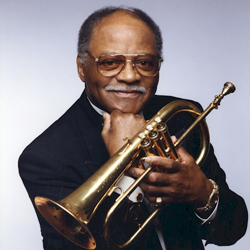
Clark Terry photo courtesy of the artist
The revered trumpet and flugelhorn master Clark Terry sits in with The Jim Cullum Jazz Band on our radio show this week, performing his original music and also tunes associated with The Count Basie Orchestra, where Clark was a member from 1948 to 1951. Terry went on to a brilliant and prolific career in jazz after his formative years with Basie. Clark fondly refers to his stint that followed with Duke Ellington’s Orchestra as the University of Ellingtonia! Other highlights of Clark Terry’s career include, mentoring Quincy Jones, performing with The Tonight Show Orchestra in its heyday, and leading his own small and large jazz ensembles.
Jim Cullum says, “Clark is revered by jazz fans and musicians alike for his swinging, lyrical style and his impeccable taste in music. He’s the trumpet player’s trumpet player.”
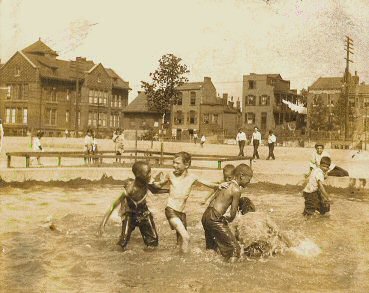
St. Louis children playing, 1920s. Photo in public domain.
Clark Terry was born in St. Louis in 1920. Musicians playing the Mississippi riverboat circuit often stopped off in St. Louis, and wound up staying. According to Clark, his hometown had a reputation for good food, handsome women, cheap booze and great trumpet players.
Clark Terry fell in love with the trumpet when he was a boy. Unable to buy a real instrument, he rigged up a horn out of a piece of garden hose, with a kerosene funnel stuck in the end for a bell. It didn’t produce much music but Clark had a great imagination. In his St. Louis high school, Terry didn’t have any better luck getting his hands on a real instrument. By the time, he finally won a place in the band, all the trumpets were taken, and he wound up with a beat-up valve trombone.
.jpg)
Young Clark Terry photo courtesy of the artist.
Undaunted, he and his pal Ernie Wilkins (the noted tenor saxophonist and arranger who would later work with Count Basie alongside Clark) formed a little jazz band together. Clark had to walk ten miles across town to rehearsals but he didn’t mind; he loved making music more than anything else.
In a family of twelve kids, money was always tight. To earn his ‘board and keep’ while living with his older sister as a teenager, Clark went into business hauling ashes from coal furnaces. He advertised, “Let the Terry brothers do your hauling,” and they did all right for themselves. After high school, Clark Terry set out to make music his life’s work.
After gigging with Charlie Barnet for a while, Clark Terry joined The Count Basie Orchestra in 1948; he was 28 years old. Clark describes the “trial by fire” of his audition with the Basie Band on our radio show:
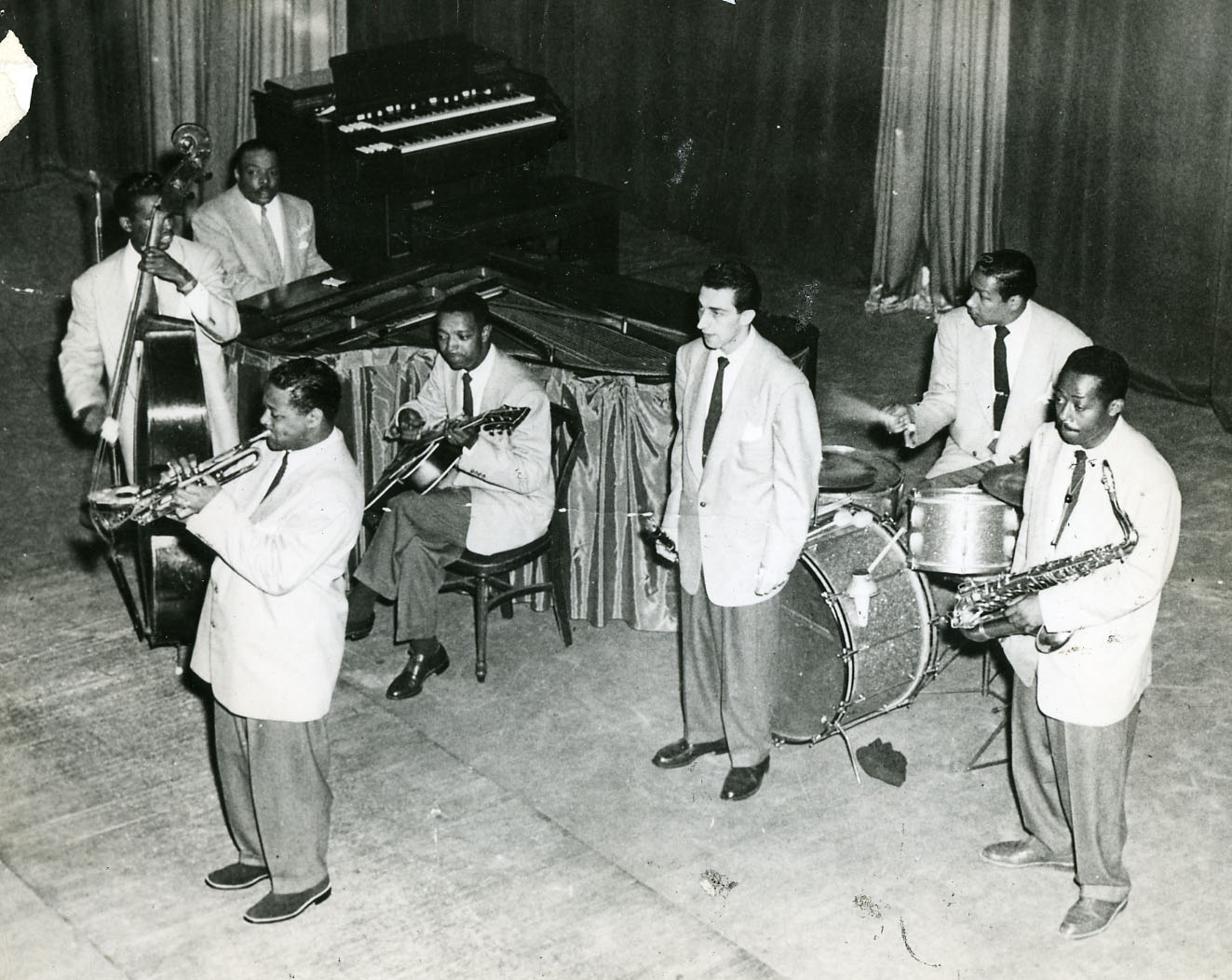
Clark Terry with the Count Basie Band, 1940s. Photo courtesy of the artist.
“They pulled out the hardest chart they could possibly find. I was so psyched up, I felt like I was already a member of the Basie Band even before I got the job. I had really studied the band. By the time they were passing out the audition chart I had prepared myself psychologically, to I fit in. This chart had a very high note, a ‘high A,’—and I had never played a ‘high A’ in my life, and I haven’t played one since. But I was psyched up to the point where I made that ‘high A’—it’s not an easy note to play. I got the gig!”
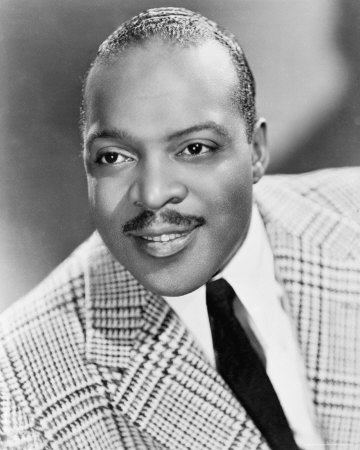
Count Basie. Photo courtesy last.fm
When asked why he thinks the Basie Band was so popular among musicians, Clark says, “Basie himself was a very relaxed person and the band turned out to be pretty much like he was.”
In conversation with host David Holt, Clark Terry tells the story of Duke Ellington’s invitation to join his renowned orchestra:
“Duke happened to be playing Chicago, the same town I was in with Basie’s small group. Duke was at one of the big theaters downtown, and we were in a little lounge called the Capital Lounge. Duke had sent his people over to scout me out, several people, in fact. In one particular case, he decided to come over himself and see me playing with Basie. In a quick moment, when nobody was noticing, and he came over and whispered to me, ‘How would you like to join my band?’ I said, ‘Sounds like a great idea.’ So he said, ‘Well, we’ll have to talk about this, but we can’t talk around, you know, people, so why don’t I meet you at your hotel?’
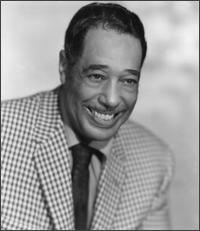
Duke Ellington photo courtesy groovenotes.org
The next day, Duke came over to the hotel and rang me up from the lobby. He said, ‘Well, I don’t want to discuss things in your room with your wife there, and we can’t do this in the lobby, so why don’t we meet up there on the floor where you’re staying, and just discuss things in the hallway?’ So I told him which floor I was on and he came up in the elevator. Anticipating his arrival, I walked out the door of my room, just as Duke gets off the elevator. At just about the same time, Freddie Green (the Basie Band guitar player and Basie’s longtime friend) was coming out his door. Freddie looked up and saw Duke and me standing in the hallway— and he says, “Uh-oh!” He went back into his room and slammed his door. That night on the job, Freddie Green leaned over and said to me, ‘If you don’t join Ellington, you’re a fool!’ And that was that.
A pioneer in jazz education active for decades, on this radio show Clark describes how he first became interested in teaching young students.
.jpg)
Clark Terry with The Jim Cullum Jazz Band at The Landing. Photo courtesy Riverwalk Jazz
“In the old days young musicians weren’t treated with too much respect by the older guys. These older musicians felt that if they were to impart some knowledge to younger people, they would become a threat to their security and their livelihood. So, they would actually tell you wrong answers to questions that you would ask them. One old gentleman I asked, “Mister, could you please tell me how can I improve my tone in the lower register?” He said, “Sure, son, I’d be happy to.” He said, “Do you have a mirror at home?” I said, “Yes sir.” I’m very young and naïve. He said, “You go home and sit before that mirror when you’re practicing and you make sure that you grit your teeth and wiggle your left ear. Not your right ear, but your left ear. Wiggle your left ear and grit your teeth and I’m sure that your tone will just spread out big.” Well, you know that’s the worst thing in the world to tell an aspiring student, but I went home and did it. Of course when you followed their advice, these older guys would get together afterwards and have a drink and say, “Well, we got rid of another one of those young whippersnappers.” I use that experience as a kid as an example of what I would not like to see happen in the future. I made a vow that I would do all I could possibly do to help youth succeed, and get really involved in the perpetuation of our craft.”
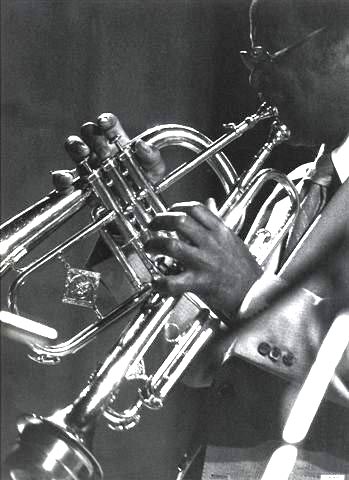
Clark Terry with flugelhorn, France 1982. Photo courtesy of the artist.
Radio Show Playlist
Tunes Clark Terry composed on
this show include, “Hawg Jawz,”
“Golden Bullet;” “Sheba” (named
after his poodle); and the
hilarious “Mumbles,” a routine
he often performed on the
Tonight Show with
Johnny Carson—it’s Clark’s
impression of an inebriated
tavern singer’s descent into
incoherence.
One of Clark’s signature tunes is the Flintstones TV cartoon series theme, which he plays here in an up-tempo jazz setting. The theme is a “head” arrangement on “I Got Rhythm,” the most commonly encountered jazz jam session vehicle other than the 12-bar blues. Clark Terry joins The Jim Cullum Jazz Band on a set of tunes he recorded with the Basie Band—“Doggin' Around,” “Sent for You Yesterday” and “’Lil' Darlin.'” Clark Terry is featured with The Jim Cullum Jazz Band on a tune from his years with Duke Ellington, “I’m Beginning to See the Light.”
Home Page image of Clark Terry courtesy the artist.
Text based on Riverwalk Jazz script by Margaret Moos Pick © 1992

